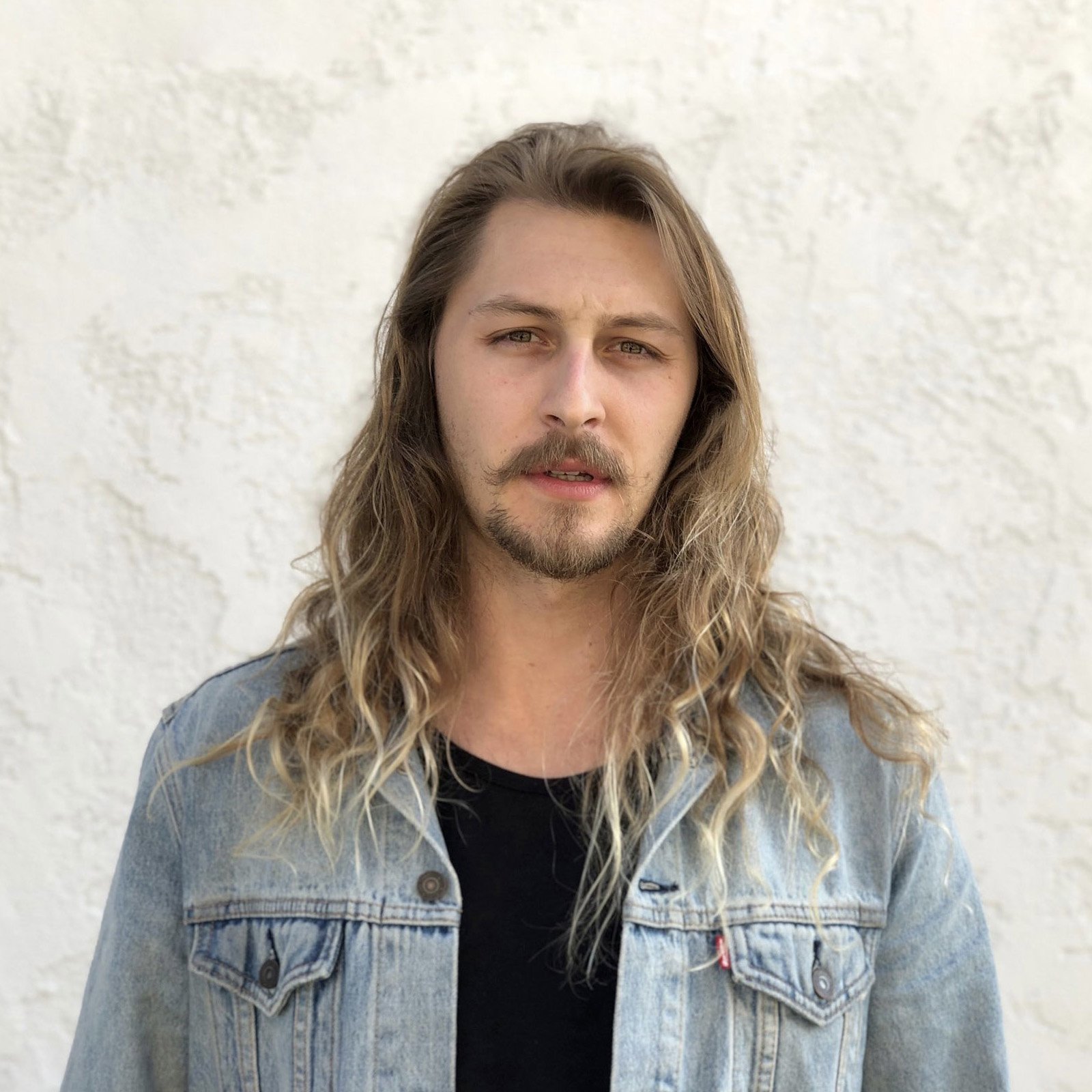How Brennan Harris Blends Classical and Modern Elements in His Art
Brennan Harris lives and works in Orange County, CA. He has exhibited his work in galleries throughout Southern California, and his paintings and prints are included in private collections both domestically and internationally.
At a young age, Harris was diagnosed with significant dyslexia. However, he discovered a strength in organizing picture planes with shapes and colors through painting. While written words presented challenges, creating art brought him success. Health and fitness are intrinsic parts of his world, influencing both the formal qualities and the content of his work. The discipline he practices in the gym mirrors the discipline in his studio, manifesting in meticulously crafted paintings that celebrate the beauty of the physical world.
Harris earned his AA in Studio Art in 2017 from Golden West College and completed his BA in Studio Art, with a focus on drawing and painting, at California State University, Long Beach, in 2019. This body of work represents years of study and development. As an emerging artist, he aims to expand his designs and concepts into various media and art markets.
How have the philosophies of Classical Greece and Rome shaped your artistic vision?
I strive to embody the Aristotelian values of arete and ergon—maximizing my potential through good, hard work. Each painting is created with the utmost care, focusing on strong design and craftsmanship. Physical beauty was paramount in the Classical world, and it is equally important to me. I resonate with Marcus Aurelius’ quote, “What doesn’t transmit light creates its own darkness,” and I aim to bring more beauty into the world through my art.
Can you walk us through your creative process and how you bring a painting to life?
Step-by-step:
Select a subject that resonates with me.
Evaluate which sections of the image can be altered or determine if the subject should be placed in an environment.
Gather images of flowers or natural elements to offset the coldness of the statue.
Create a digital collage in Photoshop with the reference materials, refining color harmonies, scale, and space.
Transfer the finalized design to the support using a poster study, grid, or projector, depending on the size.
Clean up the transfer with a graphite pencil and make adjustments to the design.
Tone the canvas with a neutral gray or brown at a medium value.
Premix the colors and render each section until the image is blocked in.
Add the fine details and let the piece sit for a while to ensure the final result matches my vision.
How do you blend the elegance of classical art with vibrant, modern elements in your work?
This process is intuitive for me. I spend time with the subject and figure out what it "wants" from me. Classical and modern aesthetics aren’t as disparate as they may seem. We may have modern pigments, but beauty is eternal and transcends centuries. Human emotions, desires, and struggles remain fundamentally the same. I add to the stories that have been told for millennia, combining ancient and modern in a way that feels natural and exciting.
How has living with dyslexia influenced your artistic journey and the themes you explore?
Dyslexia is the reason I got into art. I failed out of college twice due to poor grades, but when I returned, I connected deeply with art and thrived in that environment. Words failed me, but shapes, values, and colors did not. Now, I have a more positive relationship with dyslexia. It drives me to grow and become an example for others with neurodivergence. Classical statues inspire me to work hard, and my experience with dyslexia instilled the work ethic I have today. I’m also interested in exploring beauty in unexpected places, finding aesthetic pleasure in what’s distorted or divergent.
In what ways does your commitment to fitness and health reflect in your art?
Fitness entered my life before art, and it taught me lessons that translate into my artistic practice:
I love working hard! Fitness taught me the value of a strong work ethic and pushing my limits. This applies to my art as well—both physically and creatively.
I set up a structure with flexibility. In art, I limit subjects, style, and content initially, then make adjustments to achieve the best results.
Building a strong physique takes time, and so does creating a strong body of work. Patience is key, and I enjoy the long path.
Mistakes happen, and I’ve learned not to beat myself up. I go with the flow and embrace imperfections.
How has your artistic style and focus evolved since your time in college?
My style has completely shifted since my early work. I moved from opaque, flat acrylics to using mostly thin, transparent layers of oil. In college, I was focused on getting good grades, but now I’m focused on making meaningful art. I’ve become more comfortable with my style and methods after years of trial and error, and I now create work that reflects my values and goals.
What dreams and aspirations do you have for your future as an emerging artist?
I hope to have a career that inspires others, especially those with disabilities. I’d love to collaborate with creators I admire and be represented by galleries I respect. Financial success would give me the freedom to pursue other adventures, and ultimately, I want to contribute something beautiful to the world—art that uplifts people when they engage with it.




